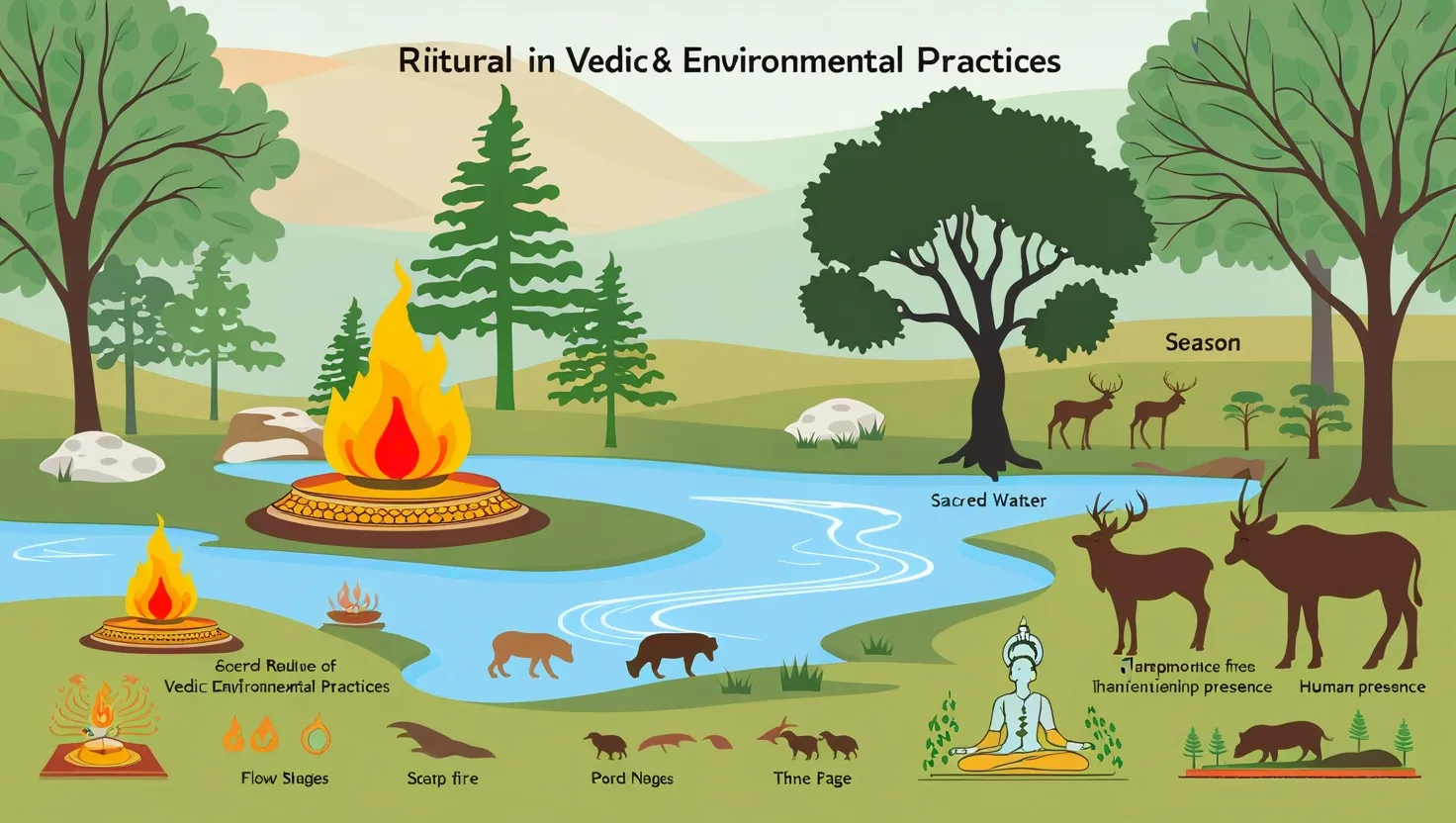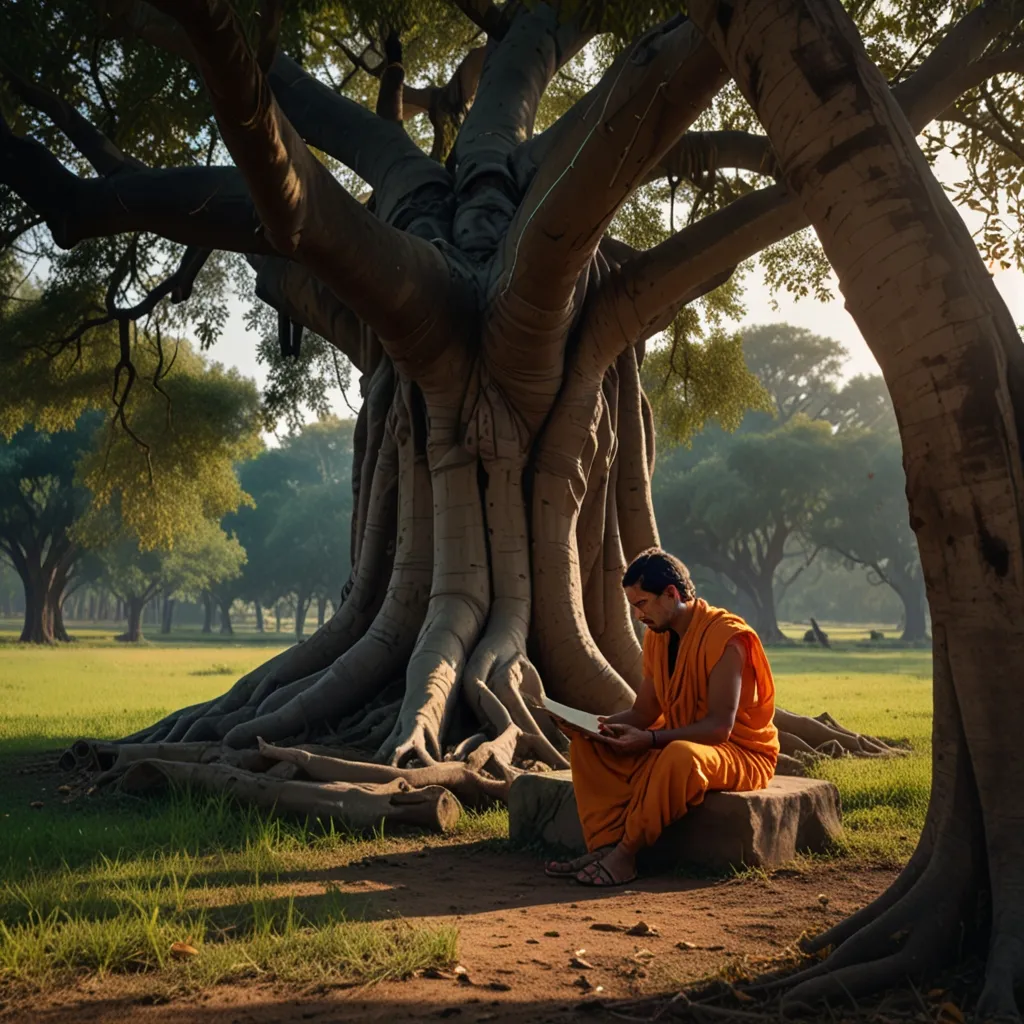7 Vedic Rituals for Environmental Conservation and Harmony
Long before the modern environmental movement gained momentum, ancient Vedic texts contained profound wisdom about our relationship with nature. These texts didn’t just philosophize about environmental protection—they established practical rituals that fostered ecological balance and sustainability. The environmental consciousness embedded in Vedic traditions offers valuable insights for our current environmental challenges.
I often find myself returning to these ancient practices when considering how to address modern ecological issues. The wisdom they contain is not outdated but surprisingly relevant to our current predicament.
“The Earth is our mother and we are all her children.” This simple yet powerful statement from the Atharva Veda highlights how deeply the concept of environmental stewardship was woven into Vedic thought.
The Bhumi Puja ritual stands as a testament to the Vedic understanding of Earth as a living entity worthy of respect. Before beginning construction or agricultural activities, practitioners would perform this ceremony to seek permission from the land and establish a commitment to use it responsibly[1]. Have you ever considered how this compares to our modern environmental impact assessments? Both recognize that land development requires careful consideration and responsible planning.
This ritual wasn’t merely symbolic—it created a psychological framework that encouraged sustainable land use. By treating land as sacred, people developed a relationship of care rather than exploitation. The practice involved offerings to the Earth and promises to maintain its fertility and health.
Vanaspati Yajna, the ritual worship of trees and plants, demonstrates remarkable ecological foresight. This practice recognized the essential role of vegetation in sustaining life long before modern science confirmed these benefits[4]. The ritual included planting new trees as a sacred activity, effectively creating one of the earliest forms of forest conservation.
“One tree is equal to ten sons,” states an ancient Vedic text, highlighting the cultural importance given to trees. When was the last time you planted a tree with the same reverence?
The cultural norms established through this ritual prevented unnecessary deforestation and promoted biodiversity. Communities maintained sacred groves that functioned as protected forest areas—an ancient version of our national parks and wildlife sanctuaries.
Water conservation features prominently in Vedic traditions through the Varuna Yajna ritual dedicated to the water deity[2]. This practice emphasized water purity and conservation through specific rituals to maintain water sources and prevent contamination. The ritual established water bodies as sacred resources essential for all life, creating cultural taboos against water pollution.
The practice included regular cleaning of water sources and offerings that expressed gratitude for this precious resource. Modern water conservation efforts might benefit from reviving this sense of reverence for our water bodies.
“Water is life,” says the Rig Veda. How often do we treat it with such importance in our daily lives?
The Agnihotra ritual addresses atmospheric purity through a precisely timed fire ceremony[5]. Modern research has validated that this practice reduces airborne bacteria and increases oxygen levels in the immediate environment. The ritual uses specific materials like ghee (clarified butter) and rice, which produce smoke with purifying properties when burned.
What makes this practice particularly fascinating is its timing—coordinated with sunrise and sunset—demonstrating an understanding of natural cycles and their effect on atmospheric conditions. The practice creates a microclimate of purified air that benefits all living beings in the vicinity.
Animal welfare finds expression in the Pasu Samrakshanam ritual, which establishes principles for animal protection[3]. This practice acknowledges animals as conscious beings deserving of respectful treatment rather than mere resources for human use.
“All beings tremble before danger, all fear death, all love life. See yourself in others. Then whom can you hurt?” asks the Dhammapada. This sentiment permeates the Vedic approach to animal welfare.
The ritual includes prayers and practices that foster compassion toward animals and discourage unnecessary harm. It creates a balanced relationship between humans and animals based on mutual respect rather than exploitation. The modern animal rights movement would find much common ground with these ancient practices.
Seasonal awareness features prominently in Rtu Puja, a ritual recognizing seasonal transitions and establishing practices aligned with natural cycles[2]. This sophisticated understanding of seasonal patterns led to agricultural and lifestyle practices that worked with nature rather than against it.
The ritual includes seasonal observances with specific adjustments to diet, lifestyle, and agricultural activities based on environmental conditions. This promotes sustainable resource management and maintains ecological harmony throughout the year.
Do you adjust your consumption patterns according to seasonal availability? This simple practice, central to Vedic living, reduces environmental impact.
Perhaps the most comprehensive environmental practice in Vedic tradition is the Pancha Mahayajna system, which includes daily offerings to all living beings[5]. This ritual establishes consciousness of ecological interdependence and humanity’s responsibility toward all forms of life.
The practice includes five types of offerings: to divine forces, sages, ancestors, humans, and other living beings. By performing these daily, practitioners maintain awareness of how their actions affect the entire ecosystem and develop habits that foster environmental harmony.
“The universe is the creation of the Supreme Power meant for the benefit of all creation. Each individual life form must, therefore, learn to enjoy its benefits by forming a part of the system in close relation with other species. Let not any one species encroach upon others’ rights.” This Vedic principle perfectly captures the ecological understanding embedded in these rituals.
What strikes me about these practices is their integration of spiritual values with practical environmental action. They don’t separate human wellbeing from environmental health but treat them as interconnected aspects of a harmonious life.
The sophisticated ecological awareness revealed in these Vedic rituals remains relevant for addressing modern environmental challenges. By studying and adapting these ancient practices, we might rediscover effective approaches to sustainability that have been tested over thousands of years.
Have you considered how incorporating even small elements of these rituals might change your relationship with the environment around you?
These practices remind us that environmental conservation isn’t just about technological solutions or policy changes—it’s about transforming our relationship with nature at a fundamental level. The Vedic approach teaches us to see ourselves not as masters of nature but as participants in a complex ecological community.
“The Earth is not a gift from our parents, it’s a loan from our children.” While this isn’t a Vedic quote, it captures the essence of Vedic environmental thought—we are temporary custodians of the Earth with responsibility to preserve it for future generations.
As we face unprecedented environmental challenges, perhaps these ancient rituals offer not just historical curiosity but practical wisdom for creating a sustainable future. They remind us that environmental consciousness isn’t new—it has deep roots in human cultural heritage that we can draw upon for inspiration and guidance.
The time has come to integrate this ancient wisdom with modern scientific understanding to develop comprehensive approaches to environmental conservation that address both practical needs and deeper human values. By doing so, we might discover that the solutions to our most pressing environmental problems have been hiding in plain sight, preserved in rituals and practices that have sustained human-nature relationships for thousands of years.






